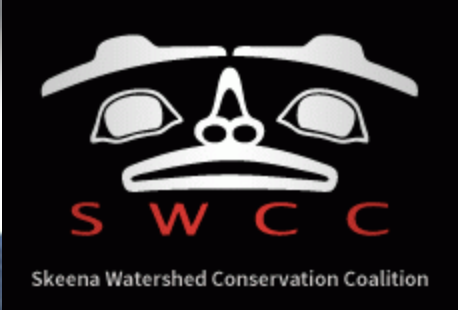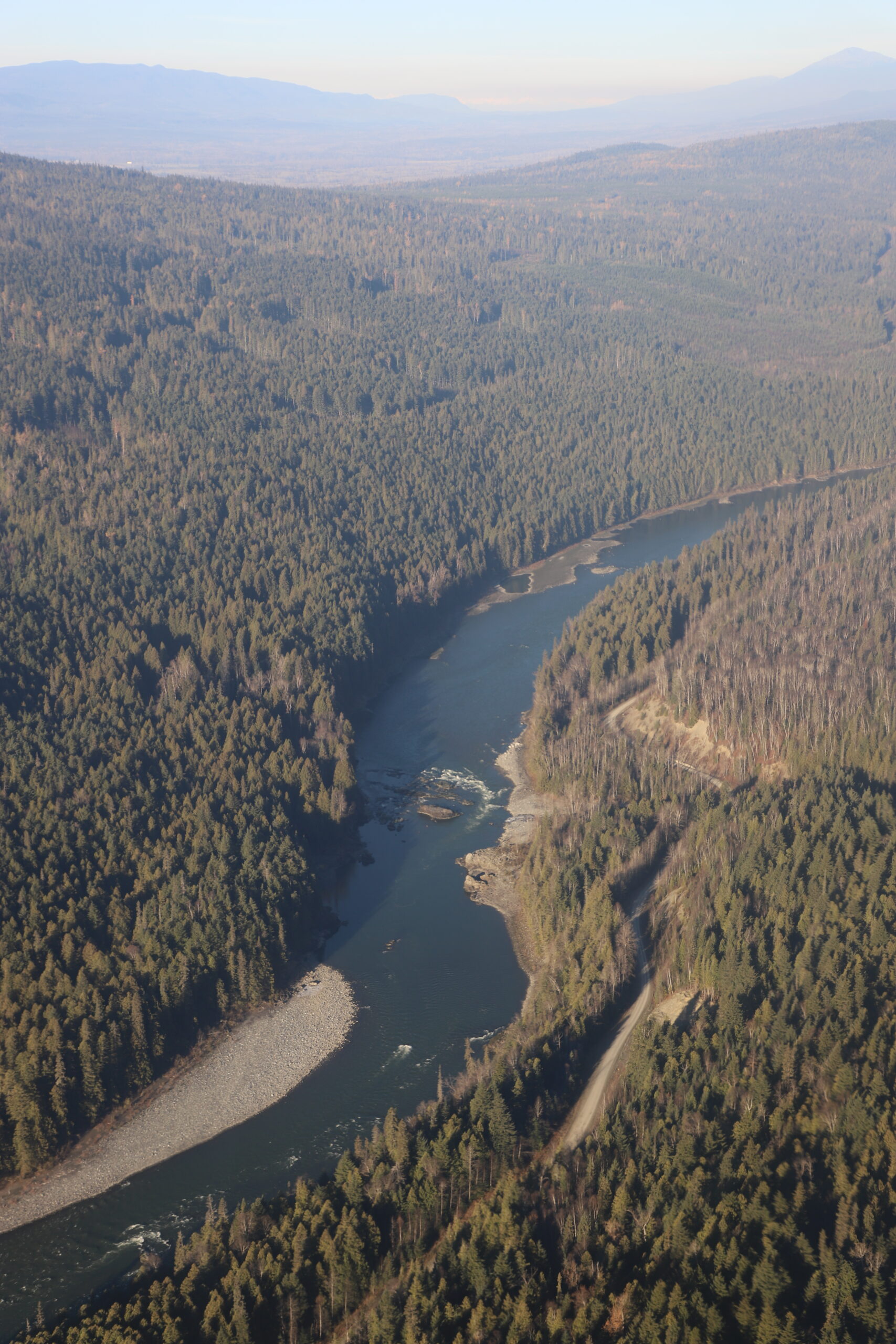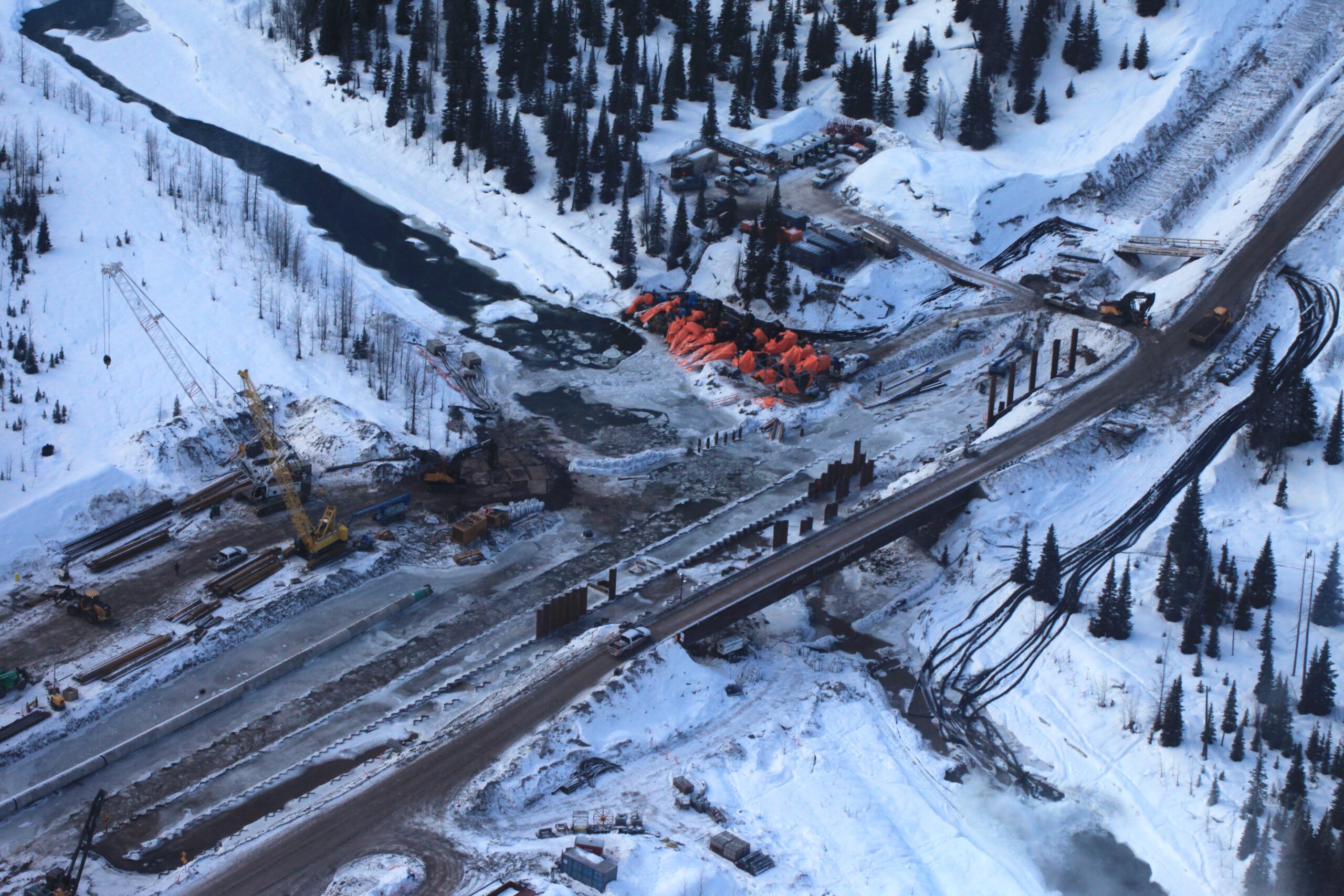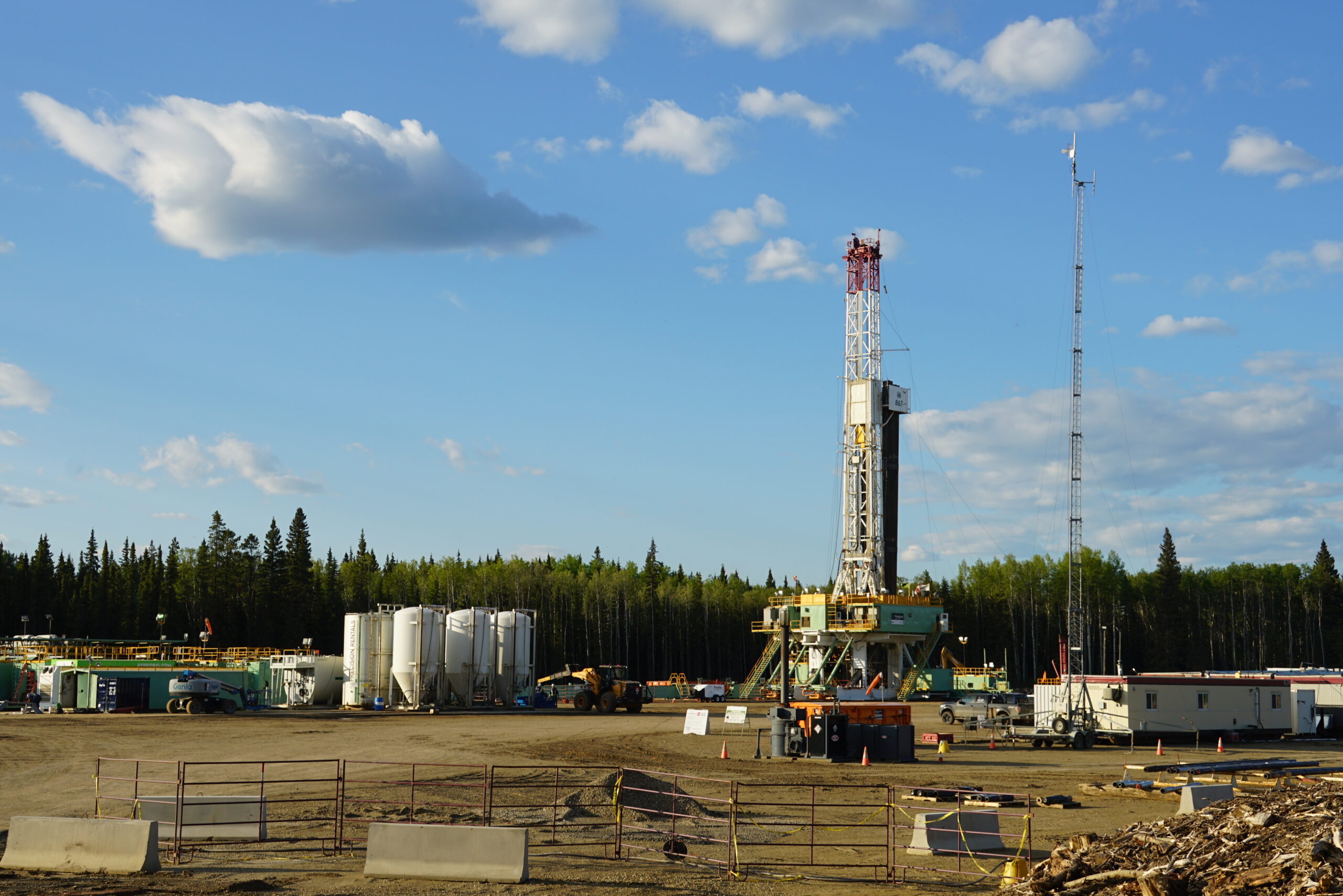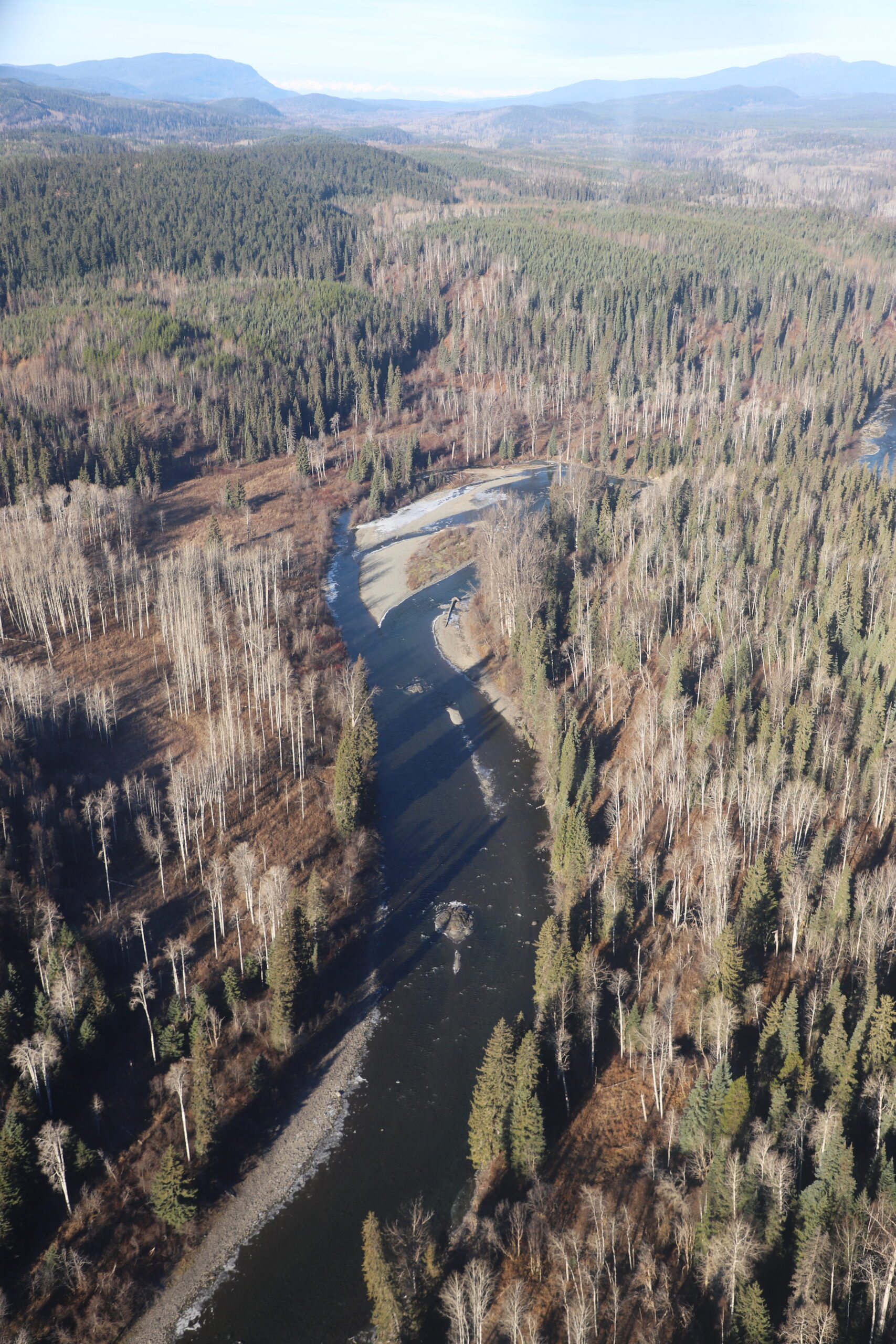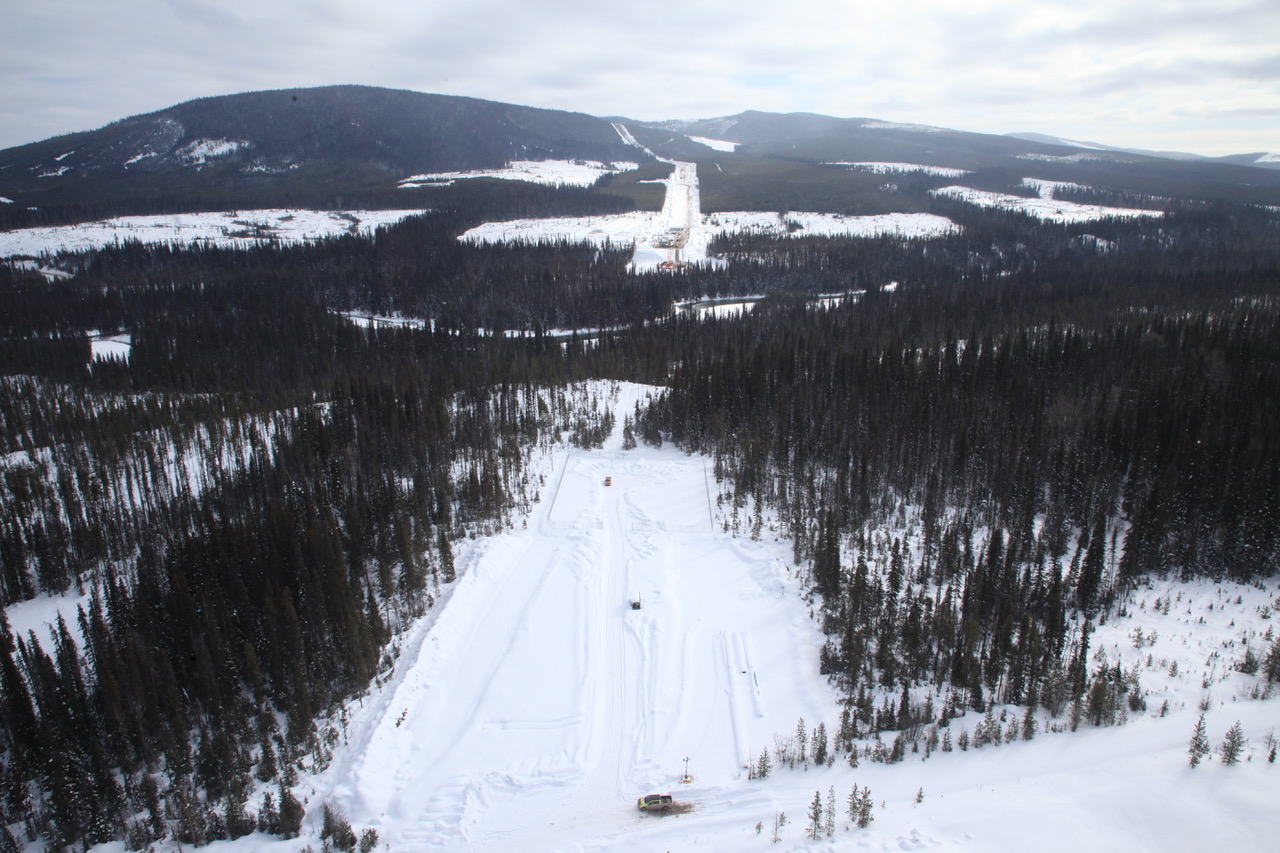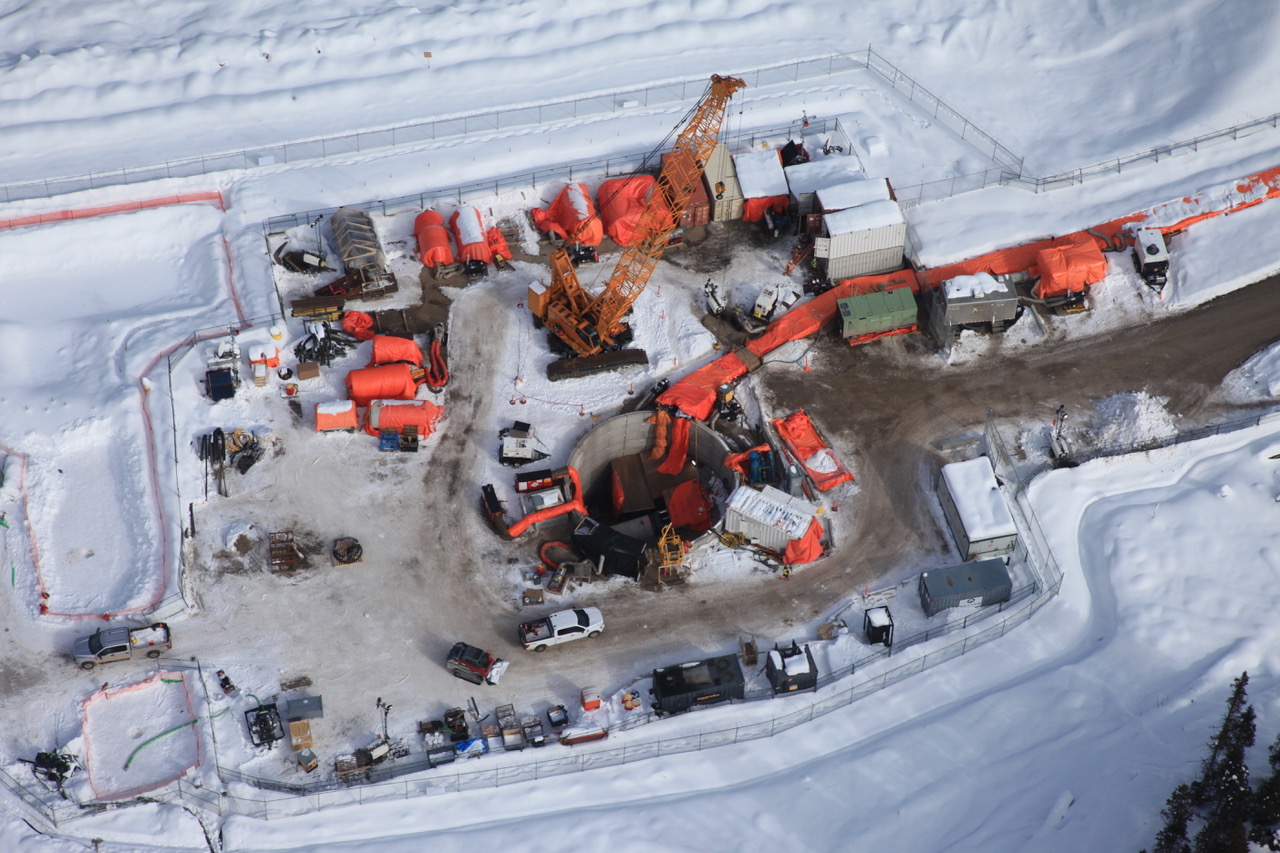LNG & PIPELINES
calls to action
swcc media
release
petition to the court – view here
New Pipeline in the Skeena Watershed? What New Pipeline?
The proposed natural gas (from fracking, not natural) Prince Rupert Gas Transmission pipeline will start in the northeast of BC and end in the estuary of the Nass river at the proposed Ksi Lisims LNG terminal. The pipeline was approved to cross the Babine, Suskwa, Salmon/Shegunia, Skeena, Kispiox and Nass rivers, all of which have salmon and steelhead. The PRGT pipeline wants to plow through numerous rivers and creeks, all of which are fish bearing. ALL of these creeks and rivers flow into or out of fish bearing watersheds. In Gitxsan territory alone, the PRGT pipeline is permitted to trench through, hang over, or tunnel under more than 100 of these rivers and creeks.
We recommend viewing this map on a desktop.
Below is an interactive map illustrating the PRGT pipeline impacts.
Construction for the PRGT project could start as early as this summer 2024.
If this were to happen, temporary workers will double our population, travel delays will impact our roads (imagine the 30,000 truckloads of pipe going over several single-lane bridges, not to mention all the other camp and project traffic), and a large compressor station will be built near Gitanmaax, Sik-E-Dakh, and Kispiox.
This is only a portion of the pipeline’s implications.
The PRGT permits have expired, so consultation with communities in the north will need to happen for things to move forward. That’s us.
We need to voice our concerns about this pipeline, and yet few of us know anything about it.
Why Are We So Concerned?
Coastal GasLink showcased what pipeline construction through a salmon watershed in the Skeena looks like. It also demonstrated the complete failure at every level of government to regulate and enforce compliance during construction—a complete boondoggle. The pipeline industry and government regulators have created opposition to future projects based on the examples provided by Coastal GasLink.
Because local leaders and Wet’suwet’en fisheries officers were not permitted to inspect or monitor pipeline construction without risking arrest, we teamed up with several other organizations and leaders and formed the “Citizens Monitoring Group.” We then hired a helicopter to fly us over the pipeline route to check in on what was actually happening.
What we saw happening on the ground left us gobsmacked. The reality of how this project was being built versus what we were reading in the news or on corporate websites told very different stories. We took photos and videos and presented our case study to BC government ministers and staff, as well as the Federal Fisheries Minister and staff.
Keep in mind, many of the impacts in this case study were legally permitted by the BC government and endorsed by the Department of Fisheries and Oceans.
Before and After Comparison Photos
#2: Below is an example of what the proposed method of crossing looked like when done during CGL construction on the Wedzinkwa/Morice River. This method of crossing is called Horizontal Directional Drilling and would be used to cross the Skeena.
#3: Below is an example of a different crossing method called “isolated, dam and pump.” The location of this photo is at the CGL Clore River crossing. PRGT hopes to use this method of crossing through many fish bearing streams that feed into the Skeena and Nass watersheds. This is also the method they would like to use to cross Utsun Creek.
Why Now?
This pipeline could be right around the corner, with summer 2024 construction possible. As folks who live along the project’s right of way, we have a responsibility to speak up about this project. We are the ones who will be left with the impacts, positive and negative, so our voices matter.
Local author, paramedic, and Kispiox Valley resident, Graeme Pole, has outlined some of the local impacts here.
On top of the looming implications to us, land, animals, and fish, we are also thinking about the ongoing impacts of the Coastal GasLink affecting our neighbours, family, and friends on Wet’suwet’en land, the Yintah. There have been, and continue to be, severe impacts on salmon, steelhead and trout, Telkwa caribou herds, and the impacts of climate change due to an increase in greenhouse gas emissions. Individuals opposing the Coastal GasLink pipeline grapple with threats, harassment, and unauthorized surveillance. Their fight against persistent violations and the concealment of environmental damage is further challenged by a deliberate choice by federal and provincial regulators to disregard these issues. This choice is a stark departure from these regulators’ oversight responsibilities.
The Skeena watershed has already shown its strength when we united and stopped Shell from fracking in the Sacred Headwaters, the Enbridge oil pipeline, and the Pacific Northwest LNG terminal in the Skeena estuary. This region united against fish farms in the migratory path of our Skeena salmon and prevented coal mining in the headwaters of the Stikine, Skeena, and Nass watersheds. We are stronger together.
Why act now? Because the flagrant disregard to community and way of life cannot continue. We have worked so hard to protect salmon and local economies while witnessing the power of unity against mega-corporations, their covert schemes, police brutality, and governmental neglect.
The evidence is clear: when we raise our voices in unison and collaborate, we can protect the lands and waters that sustain us – we can protect our way of life.
Where Does the Gas Come From?
The gas is extracted in the northeast corner of the province, from rock deep underground, using a process called hydraulic fracturing, also known as fracking.
Fracking happens when millions of gallons of water, and thousands of gallons of toxic chemicals mixed with sand, are pumped underground at very high pressure, which cracks the rocks and allows gas to escape.
The massive amount of fracking in this region got the BC government in big trouble for cumulative impacts. Back in 2014, the Ganoonaxxum (mothers and grandmothers of both Indigenous and settler descent) hosted Treaty 8 Chief, Liz Logan, at a community event to help our region understand the impacts of fracking on her community.
We heard from Chief Logan that her people can no longer drink the water or eat the berries, fish, and game. These issues were brought forward in a court case against the Province of BC where the judge found the Province guilty of allowing these ongoing, cumulative effects to impact Indigenous rights and title.
The Province hasn’t learned from their past mistakes—this is not “green” or “natural” fuel. Natural gas is a fossil fuel.
When all of the emissions are calculated (from drilling, piping, converting and burning), studies have shown LNG to be a dirtier fuel source than coal.
Before and After Comparison Photos
#2: Below shows an example of what the proposed Trenchless method of crossing looked like when done during CGL construction at Gosnell river.
#3: Below is another example of what the proposed method of trenchless crossing looks like. The photo was taken at Lamprey Creek after a construction-triggered landslide occurred.
What About the Salmon?
According to Gord Wadley, who used to work with and for provincial and federal fisheries agencies as a fisheries field technician, “the vast majority of identified impacts to fish habitat and fish access for spawning and rearing fish have never been addressed.”
Pipeline projects like CGL have shown us that the number of failed culverts, silt and sediment flows, and bank failures are too numerous to count. The pipe itself, embedded in the ground through wetlands, acts as a subsurface dam preventing the vital flow of groundwater to salmon streams. The results of these environmental infractions are declining fish runs, degraded creeks and streams, and a lack of access for spawning and rearing of the salmon we hold so close to our hearts. Coastal GasLink pipeline construction has completely altered the salmon habitat system in the Morice, Clore & Gosnell waterways and we may not fully understand the depth of these impacts for decades. This is a generational liability.
The rivers and streams the PRGT line would cross have already been compromised to the point that most salmon runs range from 10 to 30% of historical numbers. The impact has been from loss of access to important habitat for fish at various life stages, changes in water flow and channels, logged-over streams, and silt and sediment transport.
On top of the pipeline’s potential impacts to salmon-bearing streams and rivers, the fish habitat in many parts of the Skeena watershed has already been hammered. You can see the data visualized on the right, (or below, if you’re on mobile) using the Federal Government’s very own Wild Salmon Policy!
Double click the image to interact with it
Before and After Comparison Photos
How Big of a Problem is This Project For Us?
Countries such as France, Germany and Northern Ireland have banned fracking due to concerns over its environmental and social impacts. The province of Quebec has placed a moratorium on fracking until further research can be done. These actions against fracking prompt the question, “Why is BC expanding fracking without greater consideration for its environmental and social consequences?”
Many of the chemicals used in fracking are well documented for causing cancer, birth defects, and disorders of the nervous system. In addition to groundwater contamination, fracking can also cause earthquakes. Methane (also produced in the fracking process) accounts for 14% of global greenhouse gasses (GHG), and is responsible for over one-third of human-caused climate forcing.
Here are just a few other ways the PRGT would impact us:
- Restricted access and permanent damage to traditional territories
- Travel delays
- Impacts to services (e.g. healthcare, roads, grocery stores and 9-1-1)
- Real estate speculation, housing shortages
- Social risks (e.g. addictions, risks to women)
- Pollution (e.g. air, water, light, noise)
- Salmon at risk
- Methane-toxic smog from compressor stations
- Health risks from compressor stations (e.g. headaches, nausea, cancer, heart diseases, lung diseases, asthma, stroke, high blood pressure, reproductive / birthing problems, mental health issues, neurological disorders, sleep disruption, existing medical conditions made worse)
- Potential for catastrophic failure (e.g. explosion and fire)
Take Action
Here, we’ve listed a few ways you can take action. They’re organized by effort involved – feel free to do a little or as much as you can!
(Click the plus sign to expand)
Add Your Name
- Youth of the Gitxsan Laxyip: Solidarity Statement
- YES, I call on Environment Minister George Heyman to stop fast-tracking construction of the PRGT fracked gas pipeline! (Dogwood BC)
- Keep gas in the ground (Dogwood BC)
- Fracking for LNG far worse for the climate than burning coal (Dogwood BC)
- Stop LNG from fueling climate chaos (David Suzuki Foundation)
> Sharon Hartwell, MLA for Bulkley Valley-Stikine: [email protected]
> Steven Guilbeault, Minister of Environment: [email protected]
> David Eby, Premier of BC: [email protected]
> Adrian Dix, Minister of Energy and Climate Change: [email protected]
> Randene Neill, Ministry of Water, Land & Resource Stewardship: [email protected]
> Honourable Tamara Davidson Minister of Environment and Parks: [email protected] – Cc the Green Party: [email protected]
Call
- Make the Call to Share Your Concerns About BC LNG
- This link conatins information about LNG and talking/messaging guiding points
- Call local decision makers:
- Member of Parliament, Taylor Bachrach: (613) 992-7688
- Stikine MLA, Minister of Water, Land, and Resource Stewardship, Nathan Cullen: (250) 842-6338
- If you’re a member of a band council, please consider calling the chief of council.
- Please consider calling or talking to your Hereditary Representatives and Leaders.
Calling guiding points:
- Introduce yourself (E.g., I’m a grandmother, immigrant, farmer, student, etc.)
- Ask: Will you commit to ensuring the PRGT pipeline doesn’t go forward?
- Share your email address and tell them you’d like a response.
- Tell them why you are concerned about the Prince Rupert Gas Transmission pipeline in B.C. Choose one below, or share your own:
-
- None of your climate action policies or BC Climate plan matters if you approve more of these massive emitters!!
- Why are public funds and infrastructure supporting projects backed by some of the largest corporations and industry on the planet. Stop socializing the costs and privatizing the profits!
- The world’s leading climate science and energy market experts have been saying, over and over again, that we can’t build any more fossil fuel projects anywhere in the world if we want a livable planet.
- This pipeline needs a new environmental assessment, especially as we approach its current certificate’s ten-year expiration date. But mostly, it’s a terrible idea for climate, air quality, fish, communities and biodiversity.
- Fracking for gas consumes more than five billion liters of water every year in northeast BC, which is already experiencing Stage 5 drought conditions — in the middle of winter! A fracking boom would require much more water, putting communities and ecosystems at greater risk of drought and water restrictions.
- Liquefied “natural” gas isn’t very natural at all. It is harmful to public health and is produced by pumping toxic chemicals deep into the earth. Fracking also leads to seismic destabilization and earthquakes.
5. End by repeating the question you have for them and be sure to tell them you will be awaiting their response: Will you commit to ensuring the PRGT pipeline doesn’t go forward?
6. Don’t forget to leave them with your contact information.
Get Caught Up
- Read the most recent updates coming from the Gitanyow Hereditary Chiefs
- Follow us on social media for relevant updates:
- Place Based Power Project
-
- Despite increasing recognition of the health impacts of fossil fuel extraction, environmental racism, insufficient monitoring, and a lack of public awareness persist. Remote, Indigenous, racialized, and poor communities experience most of these impacts, demanding a comprehensive response. This is where the Place Based Power Project comes in. This project seeks to fill the advocacy gap, enhance knowledge among decision-makers, and educate the public in Canada about the health harms of fossil fuel extraction. It will do this by deepening connections between Canadian Association of Physicians for the Environment staff and physicians and the organizations and Nations already addressing and advocating for environmental health in regions impacted by fracking and tailings, then collaboratively identifying core issues of concern and developing communication and advocacy strategies. Click here to learn more.
-
- Follow Youth of the Gitxsan Laxyip on their socials:
Wait, Does This Mean There is Fracking Happening in the Skeena Watershed?
There is no fracking in northwestern BC, at least not yet. In the PRGT application, it was openly stated that if a pipeline through northwestern BC is developed they would explore “midstream resources.” Once a pipeline is in place it would become viable for the natural gas reserves in the northwest to be exploited.
What would that mean for local residents? Based on the experiences of those who live in fracking areas of northeastern BC we could expect drinking water wells to be contaminated due to methane and other toxins migrating into aquifers. Fish and other aquatic life would suffer from decreased water flow in streams and die from fracking chemicals that are spilled into wetlands and creeks. Cattle, horses, other livestock and wildlife could be at risk due to contaminated surface water. This is the legacy of the fracking industry. Let’s not bring it here!
